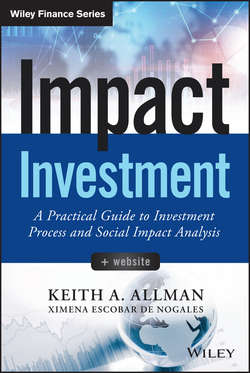Читать книгу Impact Investment - Allman Keith А. - Страница 14
На сайте Литреса книга снята с продажи.
Chapter 2
Sourcing and Screening
Sourcing Strategy
ОглавлениеSourcing potential investments is truly the inception of the investment process for any investor, whether impact focused or not. The methods employed and the decisions made at the sourcing stage lead to a variety of paths that often have an influential role for decisions at later stages of the investment process. A robust and effective sourcing strategy can help ensure that the paths with the highest probability of closing a strong investment in an efficient manner are taken, while paths that lead to wasted time, stalled negotiations, or eventual value declines are avoided.
While the concept sounds relatively simple, what does it actually mean to be sourcing? Passive sourcing is a luxury of many well-established venture and private equity funds, where some of the best entrepreneurs deliver well-laid-out business plans with financial projections or early stage businesses with rapid growth that are poised for success. Many early-stage or less-well-known impact investing investors and funds will be inundated with entrepreneurs pitching business ideas, but the average quality of the investment will be lower.
There are numerous reasons why the quality is perceived to be lower:
1. Some of the best entrepreneurs in developed markets take their business ideas to well-known investors and investment incubators, where they compete for funding and, more importantly, mentorship and connections from successful entrepreneurs. While these are typically tech-oriented, it does dilute the pool of high-level entrepreneurs.
2. The social impact element can be implemented with varying degrees of intensity. Although the heart of impact investing suggests that financial return can be achieved with social returns, there is always a point at which the social mission can impede on financial viability. Many social entrepreneurs create business plans that can be viewed as weaker from a business functionality point of view because the social mission is too aggressive.
3. Impact investments often have heightened risk because of their geographic focus being mostly outside of the developed world.
For these reasons, a passive strategy is not ideal for impact investing.
Active sourcing involves targeting investments that are aligned with the investor's focus, risk tolerance and expertise in a region and sector. The easiest place to start is determining if a region or geography is suitable for investment. Local investors clearly will not have to deal with such a macro analysis, but for any individual or fund that has a regional or global scope, country market analysis should be the first step. Country analysis is also particularly important for impact investors since the source of funding and the need for funding are typically in two very different geographies. For this reason, a more intense review and example analysis is provided on this topic.
